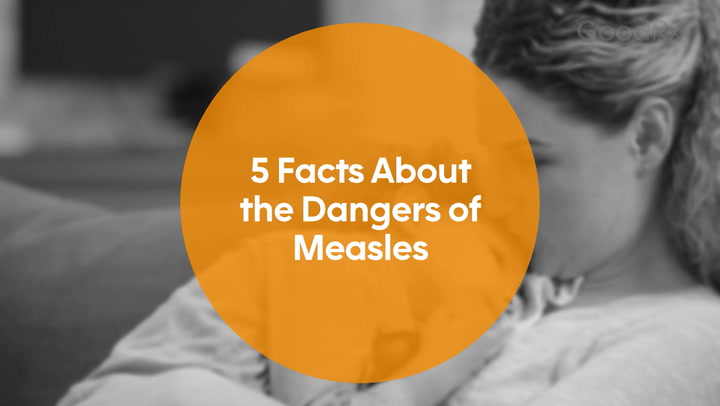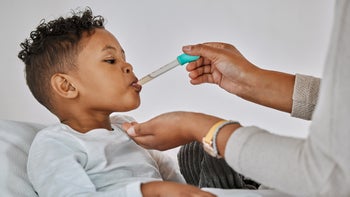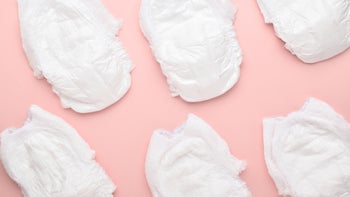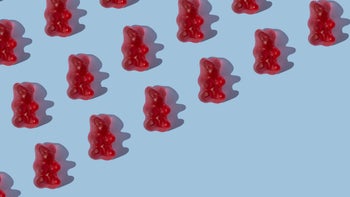
Top 11 Rashes in Kids (With Pictures)
Key takeaways:
There are many causes of rashes in kids. Each rash comes with a different pattern of symptoms, and you can tell the difference when you know the signs. But it’s always best to see your pediatrician if you’re concerned.
Usually, rashes don’t need more than a little tender loving care to get by, but there are a few that should raise a red flag to get treatment from a doctor’s office.
If your child has a rash and isn’t feeling well, get advice from your care team on what to do.
Table of contents
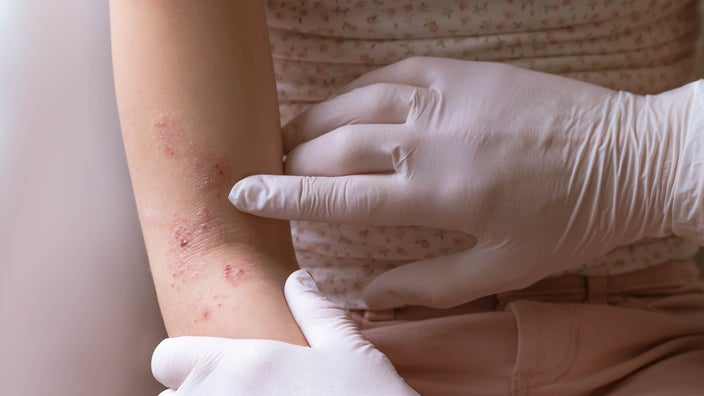
Rashes and children go together like summer and sunshine. There are a lot of different types, they are super common, and they can look different from child to child. Though they may seem scary, most rashes get better without much help. If they don’t, that’s helpful information for your pediatrician. Trust your instincts. You know your child, and even though you may not be able to diagnose the rash, you know if your child is well or not.
Here, we’ll cover some of the most common causes of a new rash in babies and children. Remember that rashes look different on different skin colors. For example, in lighter skin, a rash can look pink or red. In darker skin tones, the same rash may appear purple or brown.
1. Roseola
Roseola is a virus that’s more common in babies and younger children (under 2 years old). It first causes a high fever and then a skin rash. It usually goes away on its own and doesn’t cause any problems.
Two viruses cause roseola: human herpesviruses (HHV) type 6 and type 7.
In lighter skin, the rash causes small, pink, or light-red spots or bumps. In darker skin, the spots may be more brown or purple and can be harder to see. The rash usually starts shortly after the fever has gone away.
The rash usually starts on the body’s core (like the stomach or back) and can spread to the arms, legs, and face.
Children can have a high fever (102°F or more) that often lasts 3 to 5 days. The child usually feels OK, but they may have cold-like symptoms and eat less.
Sometimes the fever can last up to a week. Because your healthcare team may not know your child has roseola until the fever is gone and the rash appears, they may look for other reasons your child has a fever if it lasts longer than 5 days. When the rash shows up, it can last a few days.
Roseola is contagious while a child has a fever. When the fever is gone and the rash starts, your child is no longer contagious and can go to school.
Roseola goes away on its own, so treatment is focused on improving symptoms — like using ibuprofen (Advil, Motrin) or acetaminophen (Tylenol) to lower a fever — and keeping your child hydrated. Never give aspirin to a child when they have a fever. It can cause a rare, serious condition called Reye’s syndrome.
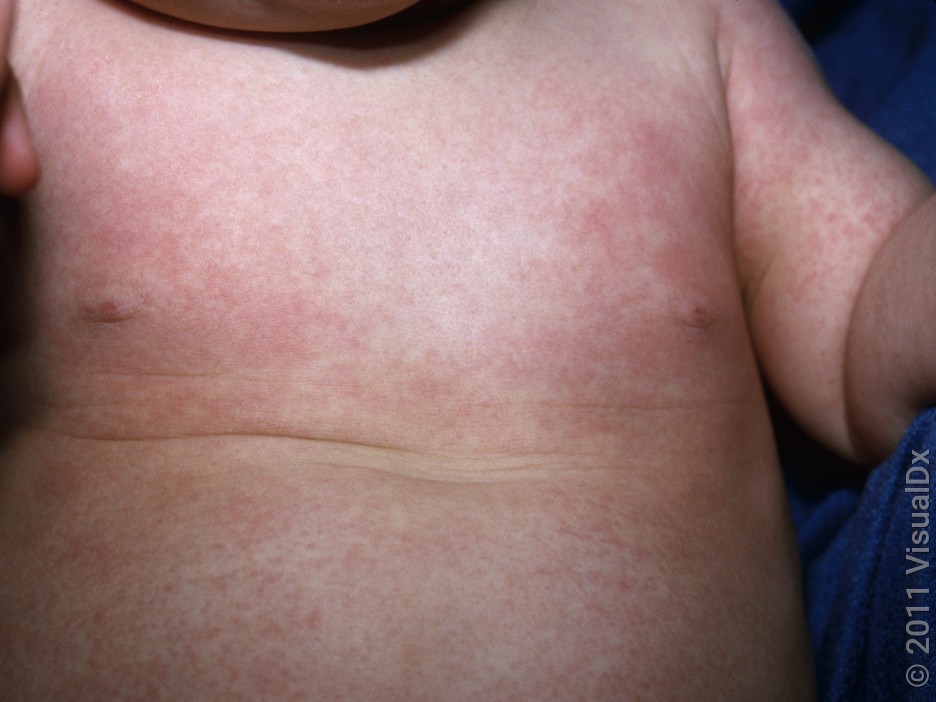
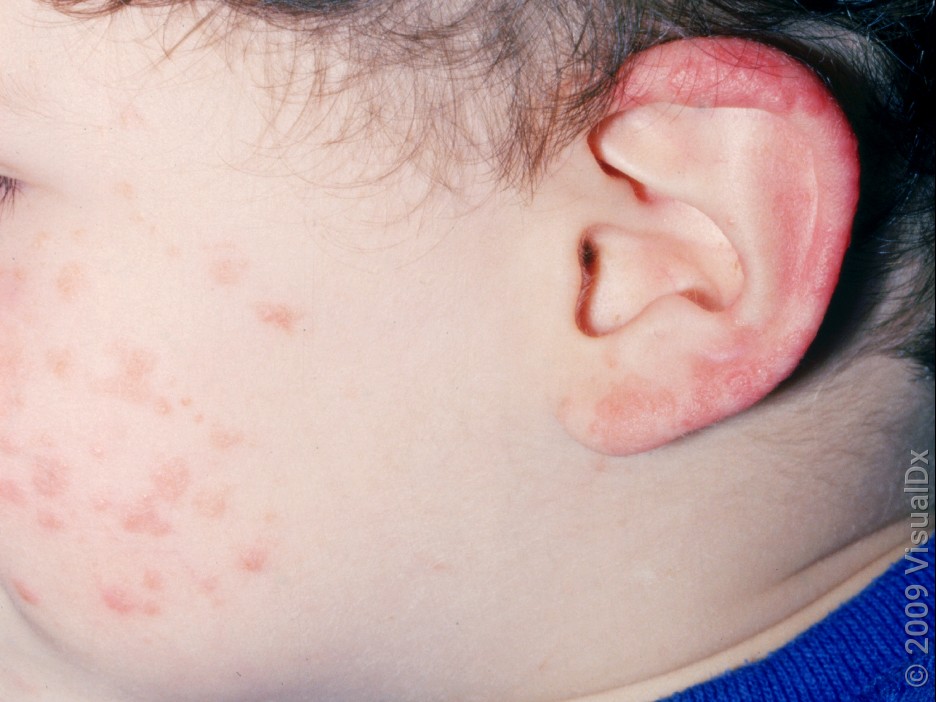
2. Impetigo
Impetigo is a common and very contagious skin infection. Mild cases may go away on their own, but most children will need treatment with antibiotic creams or pills. It usually goes away with antibiotic cream.
Most cases are caused by common bacteria — Staphylococcus aureus or Streptococcus pyogenes (also called group A Streptococcus). Impetigo spreads very easily from skin-to-skin contact with infected skin (even in the same person) or contact with infected personal items.
Impetigo rash is typically made up of sores or tiny blisters. When the blisters burst, they leak a yellow fluid that dries into a golden or “honey-colored” crust. In about a third of cases, the blisters may be larger (bullous impetigo). Rarely, impetigo infection can progress to deeper layers in the skin, a condition called ecthyma.
Impetigo can often affect any part of your skin, but it usually happens on exposed areas — like the skin around the nose and mouth, or on the arms, legs, hands, and diaper area. But it can appear anywhere there’s a cut or scratch on the skin.
The rash can feel itchy and painful. If the skin around the rash looks hot, painful, and swollen — or if your child has a fever — then it could be a sign the infection is spreading.
With antibiotic treatment, impetigo can heal in about 10 days.
Impetigo is very contagious. It’s important to cover the rash throughout treatment. Kids should avoid school and limit contact with other people while the rash is present.
Most impetigo cases are treated with prescription antibiotic cream for about a week. You also need to clean the area with soap and water. Your healthcare team may prescribe oral antibiotics if your child has more than five impetigo lesions or has bullous impetigo. They may also need oral antibiotics if they have a fever, or redness and warmth around their impetigo lesions.
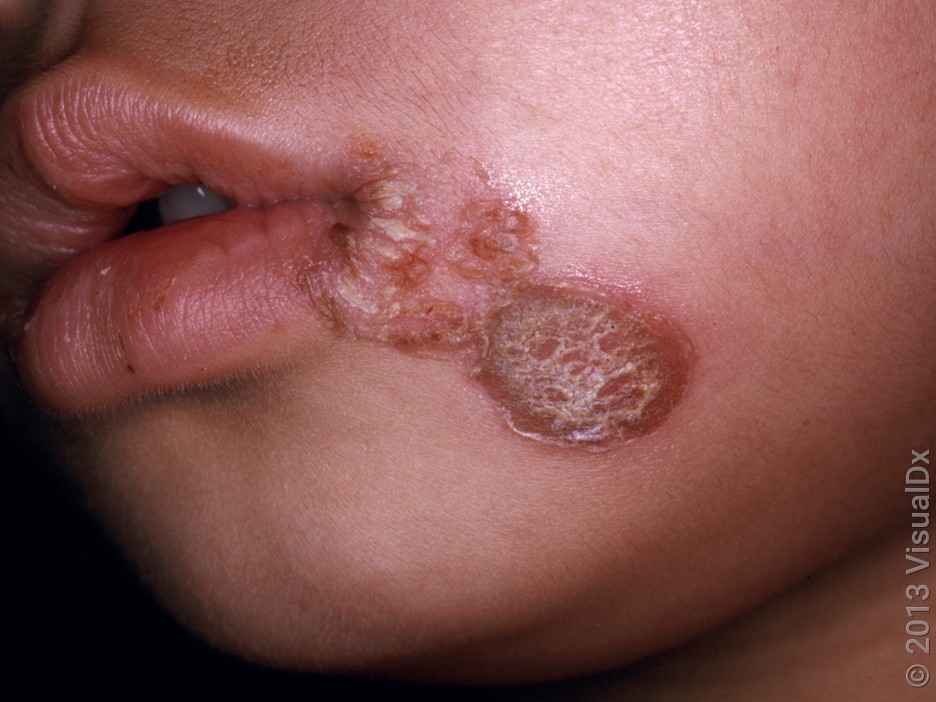
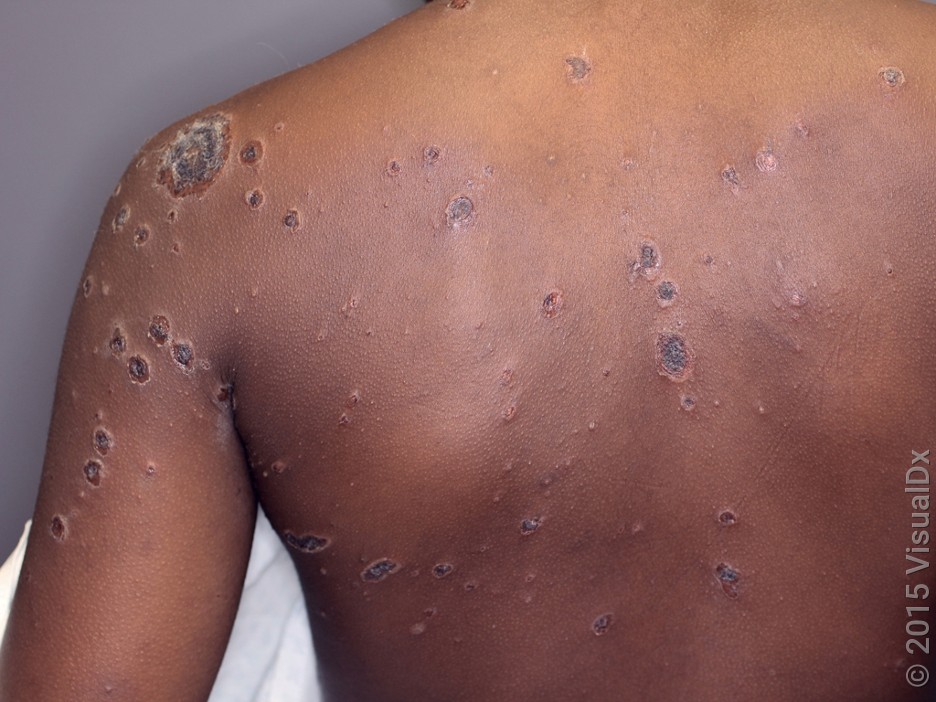
3. Hand, foot, and mouth disease
Hand, foot, and mouth disease (HFMD) is a common childhood illness that spreads quickly because it’s so contagious. It usually isn’t serious, but that doesn’t make it any easier for the little ones experiencing it.
Different viruses can cause HFMD, but the most common one in the United States is coxsackievirus A16.
The rash can look a little different, depending on the cause. It produces an itchy skin rash on the hands and/or feet along with painful sores in the mouth. The skin rash starts out as flat, red, or purple spots that turn into blisters, which can cause redness and pain.
It affects the hands, feet, the inside of the mouth, and surrounding areas. But it can also be on the lower arms or legs, and the genital or diaper area.
Your child may feel unwell and have a low fever and a reduced appetite (sometimes from pain with swallowing). In rare cases, the viruses that cause HFMD can involve the nervous system and cause viral meningitis, which is a more serious infection.
HFMD takes about 7 to 10 days to resolve. There are no treatments that can cure it faster.
HFMD is very contagious, and kids should stay home from school or day care while they are sick.
HFMD usually goes away on its own, and treatment isn’t needed other than keeping your child hydrated. Cold liquids and treats like ice cream and popsicles work best to ease any mouth ulcer pain. Avoid hot or acidic foods and beverages, which may make your child’s throat feel worse. Ibuprofen or acetaminophen can help treat fever and any discomfort from the rash.
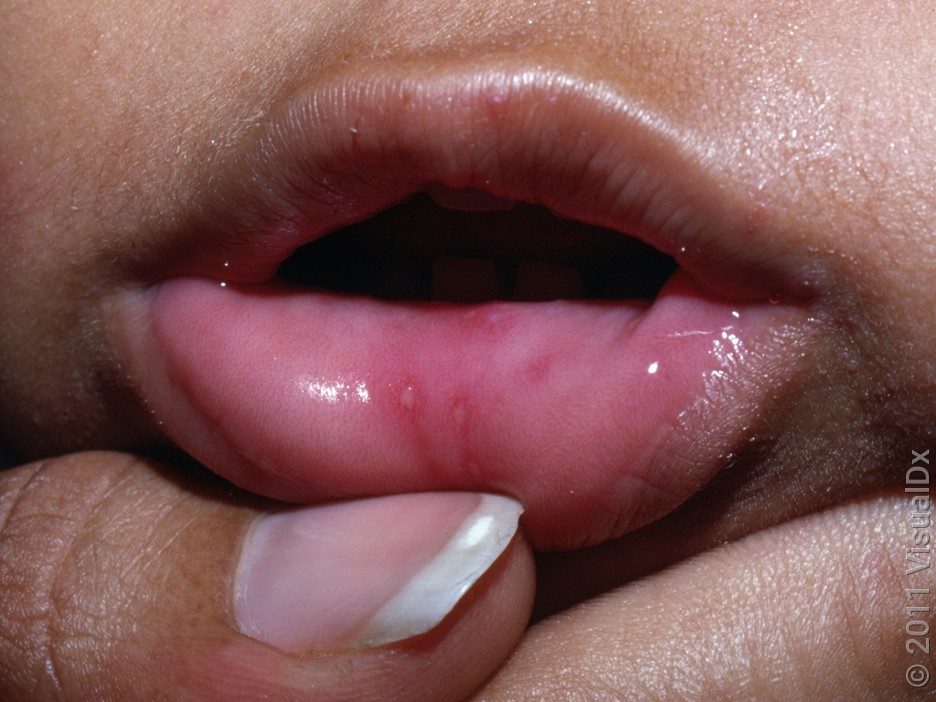
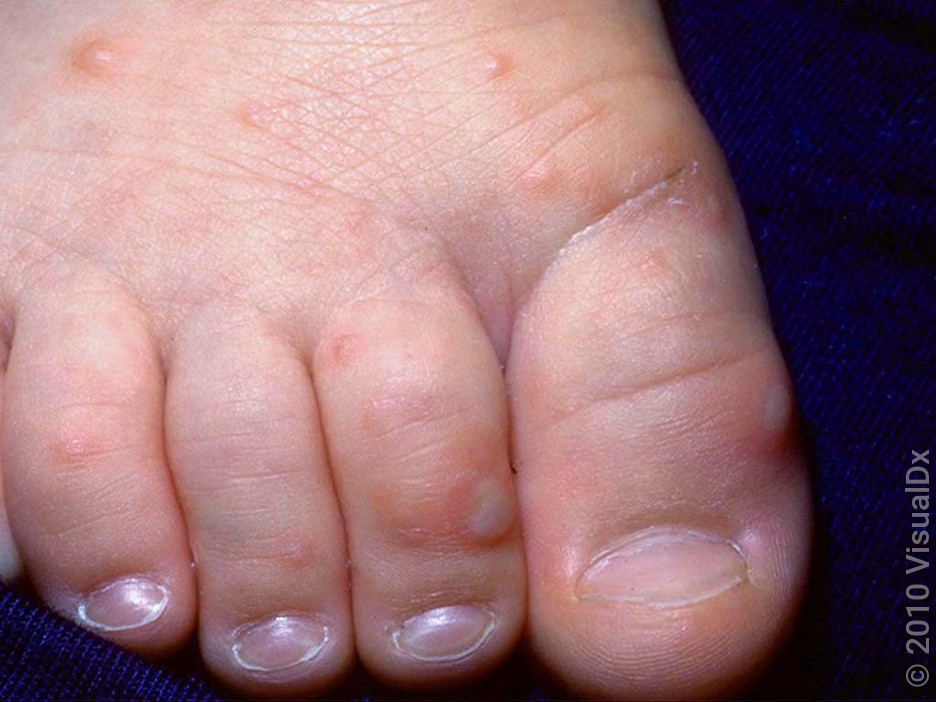
4. Scabies
Scabies are tiny mites (similar to bugs) that cause a very itchy rash. The mites live in the skin and cause an allergic reaction. They are very contagious and can spread through person-to-person contact.
The cause of scabies is the mite Sarcoptes scabiei.
The rash creates tiny bumps that may form a cluster or a line. In darker skin tones, they may be purple or brown. In lighter skin, the bumps may be pink or red. And if your child scratches the rash, there may also be fingernail marks.
Scabies can affect any part of the body. Babies and young children often have scabies on their head, face, hands, and feet.
Babies and children with scabies may be irritable and may not want to eat or sleep.
Scabies won’t go away unless you treat it. This means treating the child and anyone who has had close contact with the child (even if they don’t have symptoms).
Scabies is contagious until you treat it. Once your child gets treatment, they can return to school.
Treatment involves a medicated prescription cream that’s rubbed all over the skin from head to toe (like permethrin). The whole household (and other close contacts) needs to be treated to avoid reinfection. It’s important to note that your child may still experience itchiness after you complete treatment. That happens because the body’s immune system is still reacting to the dead mites and their droppings. Talk with your healthcare team about antihistamine treatment if it’s a problem for your child.
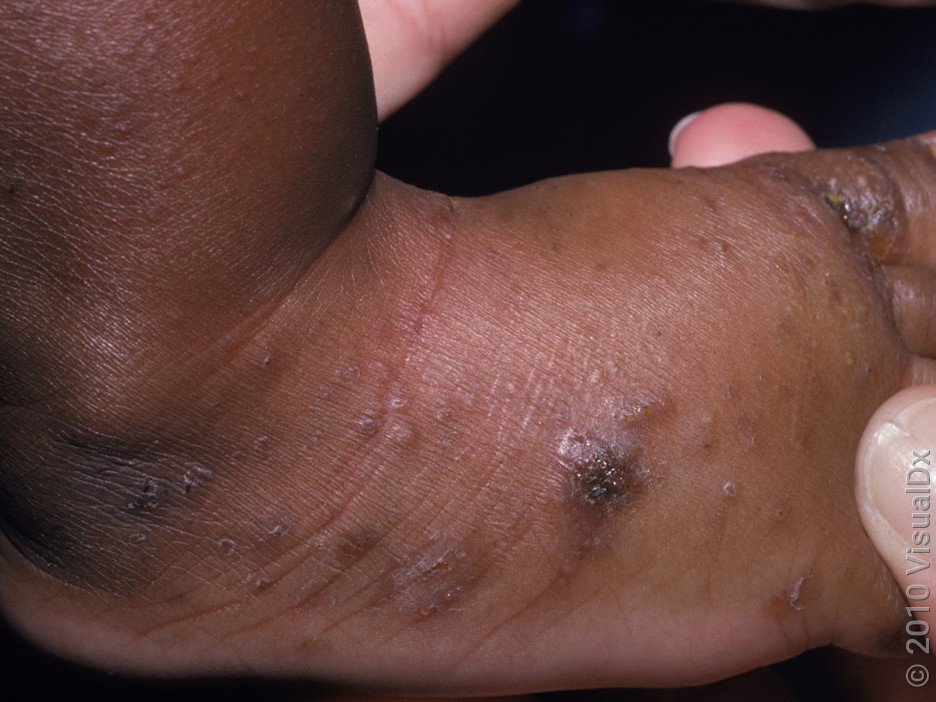
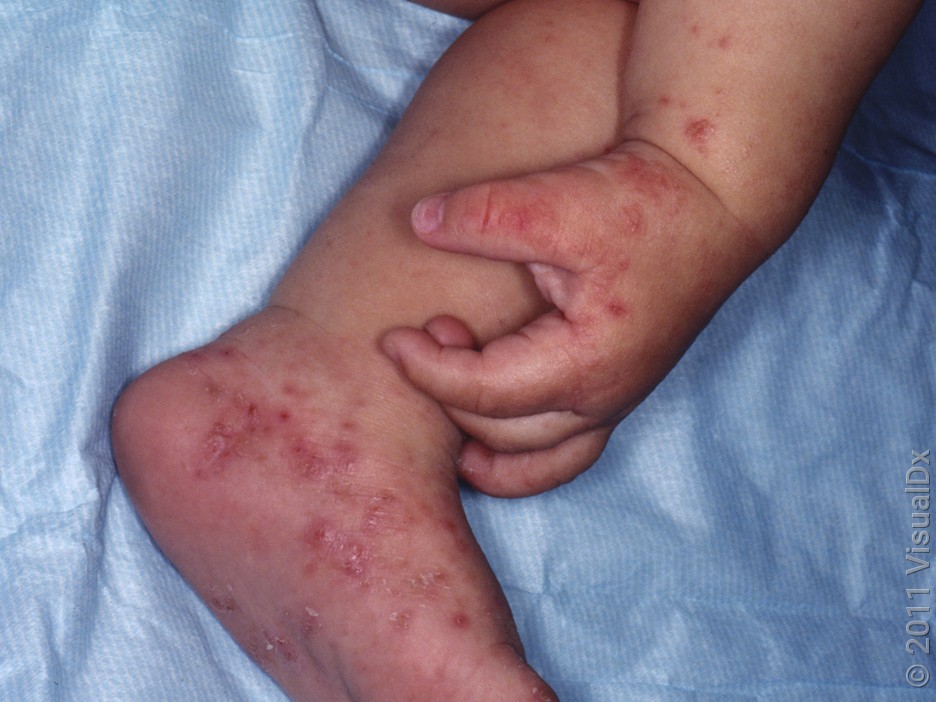
5. Molluscum contagiosum
Molluscum contagiosum is a common skin infection caused by a virus. It’s annoying and hard to get rid of, but it isn’t actually dangerous. It spreads by touching another person’s rash or items contaminated with the virus.
The cause of molluscum contagiosum is the molluscum contagiosum virus (MCV), a type of poxvirus.
The spots start as tiny, skin-colored or pink bumps. As they get bigger (about the size of a pencil eraser), they appear white and have a dimple in the middle. Sometimes, there’s irritation and inflammation of the skin around the spots.
It can affect any part of the body that touches virus particles.
Besides itch, molluscum contagiosum shouldn’t cause any other symptoms.
Without treatment, it lasts 6 to 12 months. With treatment, it can still take several weeks to months to resolve.
Molluscum is quite contagious. But as long as the bumps are well covered (so that no other people or objects come into contact with them), your child can go to school.
Molluscum eventually goes away on its own, so treatment isn’t necessary. But some parents opt for treatment to remove the spots, especially if they are on a visible area like the face. Options include creams (like retinoids) that cause skin irritation to fight off the virus, or physically removing the spots with a small blade or liquid nitrogen spray.
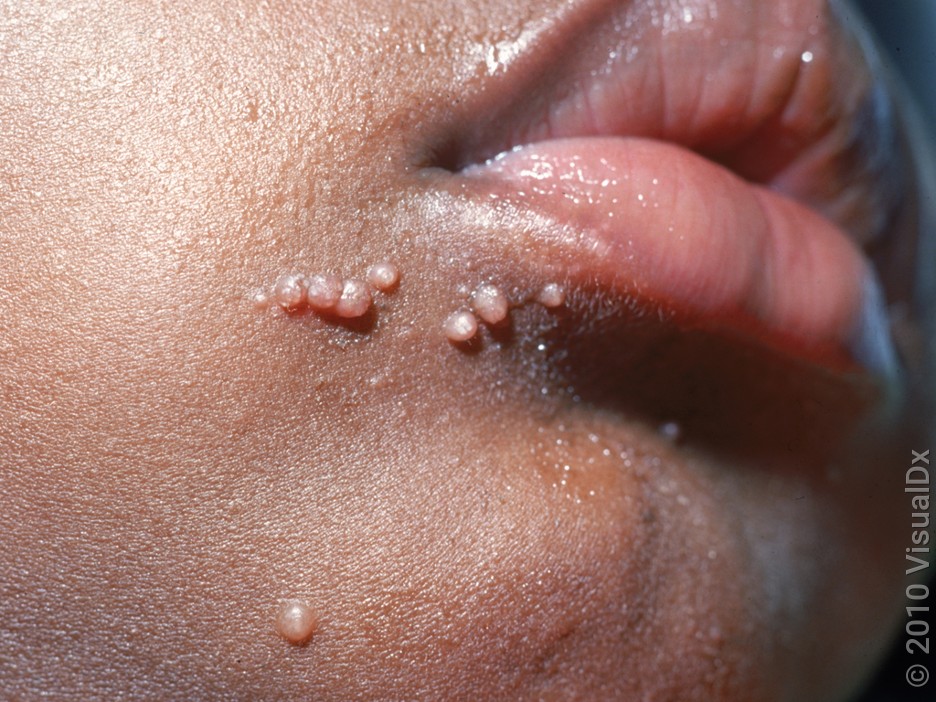
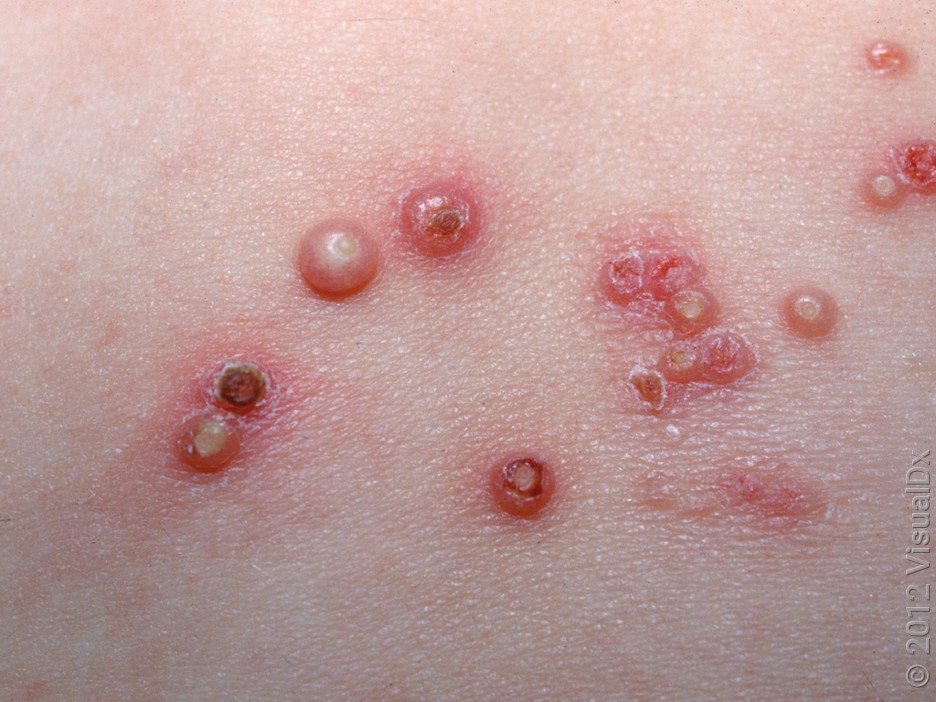
6. Ringworm
Ringworm (tinea corporis) is a fungal skin infection. Ringworm has different names, depending on the part of the body it affects. For example, on the feet it’s called “athlete’s foot.” And in the groin it may be called “jock itch.” The rash often comes up as an itchy, red ring on the skin or scalp. The infection spreads by skin-to-skin contact or from contact with objects (like towels or clothing) that carry the fungus. Ringworm can infect anyone who comes into contact with it.
Different types of fungi cause ringworm. Fungi like warm, humid locations and can live on your skin and nails. They can also live on surfaces like gymnastic mats, towels, or other personal items.
A small, raised circle appears and slowly expands. The center of the rash remains clear and looks like a ring. Eventually, several spots can appear. In pale skin, the rash is red. In darker skin tones, the rash can be gray or brown. White scales may also cover the rash.
It can affect any part of the body, but it usually shows up on the arms or legs because they tend to be more exposed.
There aren’t any other symptoms — just itching from the rash.
With antifungal treatment, the infection goes away in 2 to 4 weeks.
If your child has a rash, they’re still contagious. But if you can cover the rash with clothing or bandages, your child can go back to school.
Ringworm on the skin can usually be treated with over-the-counter (OTC) antifungal creams, like terbinafine (Lamisil) or clotrimazole (Lotrimin). Ringworm on the scalp usually needs a
prescription antifungal medication that’s taken by mouth for 1 to 3 months (like griseofulvin).
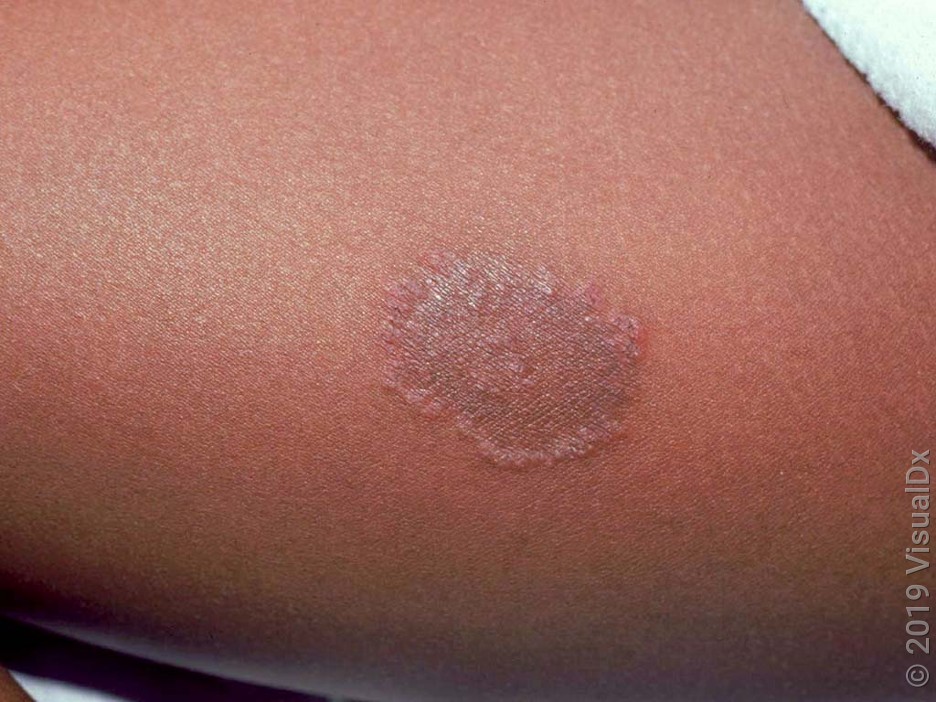
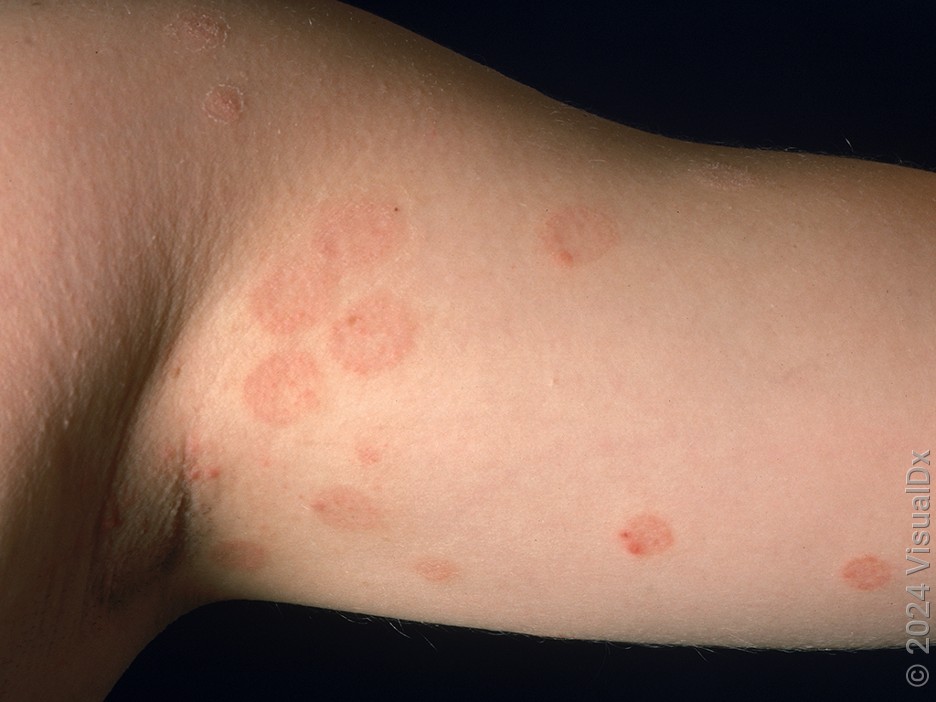
7. Fifth disease
The cause of fifth disease — also known as erythema infectiosum — is a respiratory virus that infects both adults and children. Though this illness is relatively harmless in children, it can be dangerous for an unborn baby. That’s why you should let your pregnancy care team know if you’re pregnant and you’ve been exposed. Fifth disease can also be dangerous for children with certain medical conditions like sickle cell anemia, HIV, cancer, and a weakened immune system.
Fifth disease is caused by parvovirus B19. It spreads through the air in droplets. It commonly causes outbreaks in school-age children.
Fifth disease rash starts on the cheeks, which is where it gets the name “slapped cheek” rash. In lighter skin, the patches are pink or light red, while in darker skin tones they are darker red or purple. A few days later, a lace-looking rash can appear all over the body.
The typical rash affects the cheeks first. If a body rash appears later, it typically affects the torso, arms, legs, and even soles of the feet.
Children with fifth disease usually feel sick. They can have a mild fever, runny nose, diarrhea, vomiting, and a headache before the rash shows up.
The “slapped-cheeks” rash lasts about 4 to 5 days. The body rash can last about 1 week after that. Sometimes the lacy rash can come and go for weeks, especially after exercise or if your child gets hot or has a fever.
Children are most contagious right before the rash appears. Once the rash appears, they are no longer contagious and can go back to school.
Fifth disease usually goes away on its own, and treatment other than supportive care isn’t needed. This means keeping your child well-hydrated and treating their fever and pain with ibuprofen or acetaminophen.
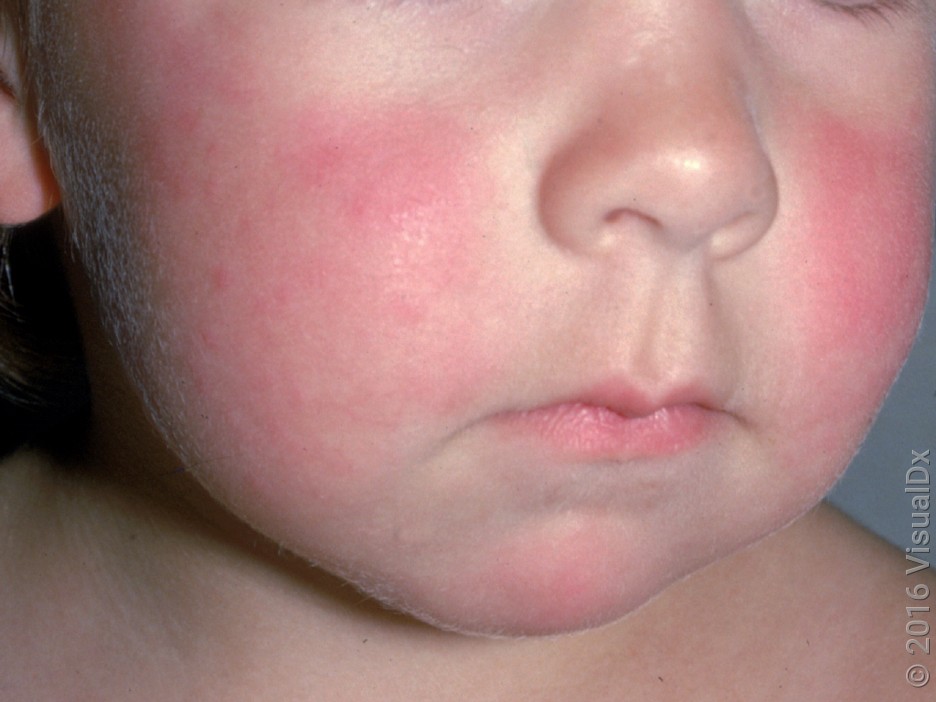
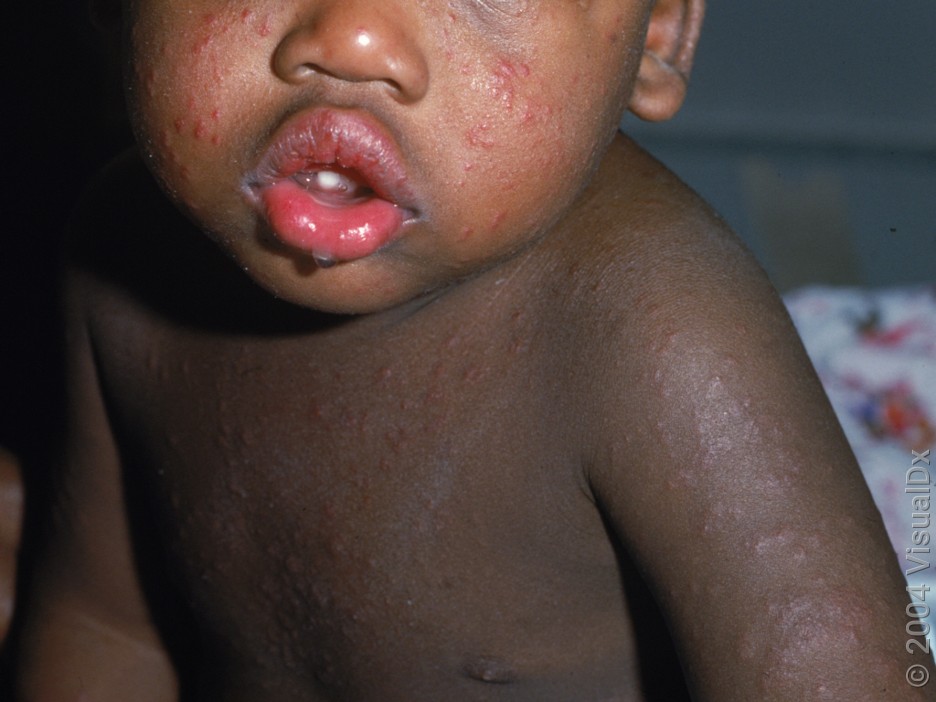
8. Heat rash
Heat rash goes by a lot of names: miliaria, prickly heat, or sweat rash. It can affect any age, but it’s most common in children and babies. Heat rash isn’t serious or contagious.
Heat rash happens when sweat glands in the skin get blocked. So, when the body gets hot and sweats, that sweat builds up in your skin and causes tiny bumps.
Heat rash causes tiny, itchy bumps on the skin. On lighter skin, they can be clear, pink, or red. In darker skin tones, they may look brown, gray, or purple.
The face, chest, neck, and back are common places younger children can get heat rash. But heat rash can occur anywhere you have sweat glands.
An infection of the rash, though uncommon, can cause blisters that leak creamy or yellow fluid. That’s a sign they may need treatment. If your child feels unwell with the rash, or has a fever, you should visit your pediatrician for an evaluation.
It usually lasts 24 to 48 hours if you’re able to stop sweating and avoid things that block the sweat glands (light tight clothing).
It’s not contagious, so you can send them to school.
Treating heat rash involves strategies to cool the skin and avoid overheating. Apply cold compresses to the area, use lightweight bedding, and avoid tight-fitting clothes. Calamine lotion and OTC hydrocortisone cream can help in some situations.
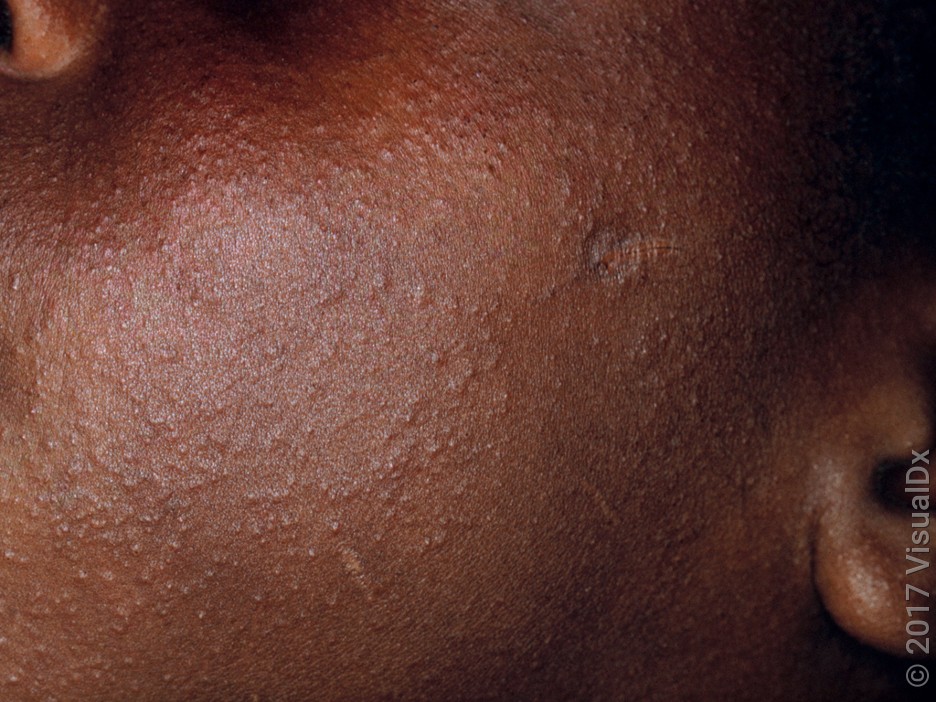
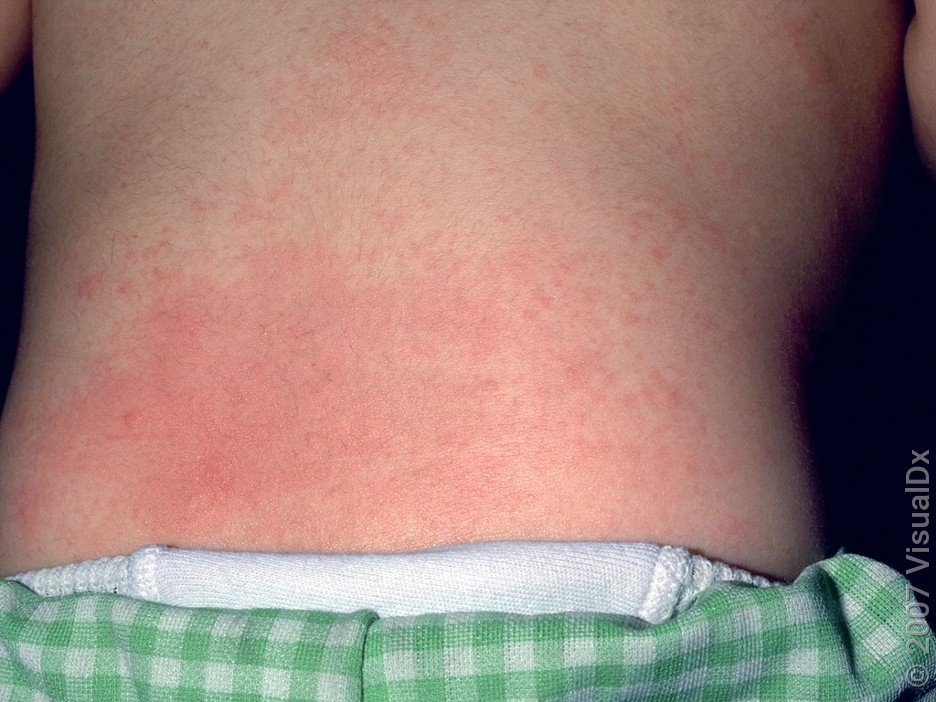
9. Hives
Hives, also known as urticaria, cause an intensely itchy skin rash that appears suddenly. It usually happens in response to an allergen — a harmless substance in the environment that triggers an allergy.
Many different things can cause hives, including allergic reactions (like to a medicine or food) or infections (like from a virus).
Hives are smooth and raised patches of skin. They’re often circular. In darker skin tones, hives can look the same color as the surrounding skin. In lighter skin, they may be pink or red. Hives range from small (the size of a pencil eraser) to large (the size of your palm or larger).
Any part of the body can be affected.
Hives are very itchy. Sometimes, there’s swelling underneath the skin (angioedema) or they are part of a severe allergic reaction (anaphylaxis).
Hives can be acute (short term) or chronic (long term). Acute hives can last from a few hours and up to 6 weeks. Chronic hives last longer than 6 weeks and might come back regularly over months or years.
Hives aren’t contagious, and in most cases they go away after a few days. If your child has other symptoms (like difficulty swallowing, mouth swelling, or a racing heart), you should get medical care immediately.
Hives caused by a virus usually go away on their own. It helps to avoid known triggers. If your child has signs of a serious allergic reaction (like difficulty breathing), get emergency medical attention. In other situations, OTC antihistamines (like loratadine), calamine lotion, and cool compresses can help with itchy skin.
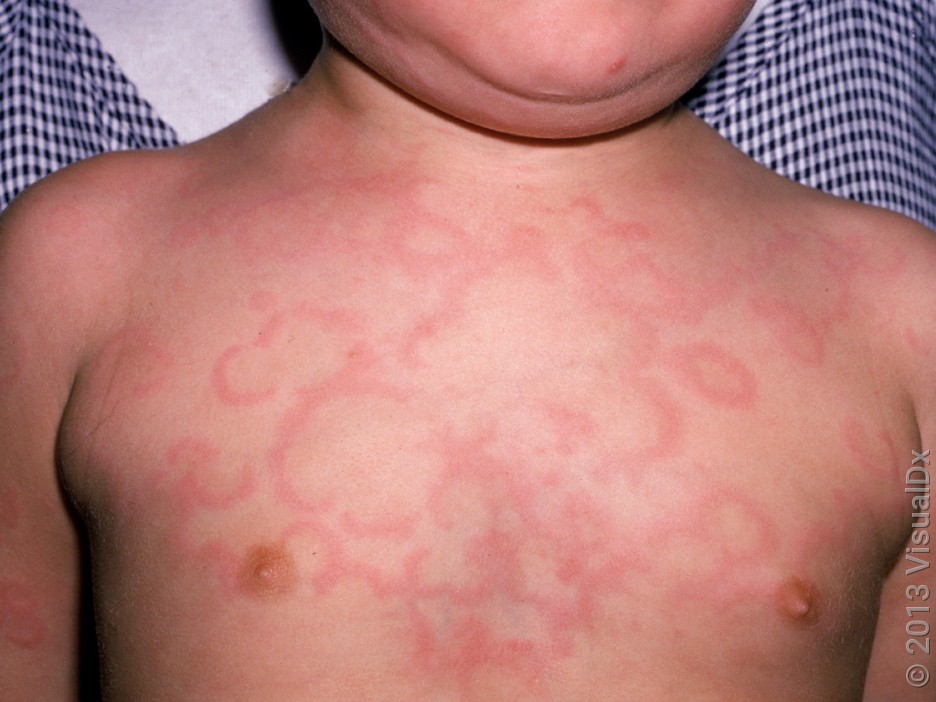
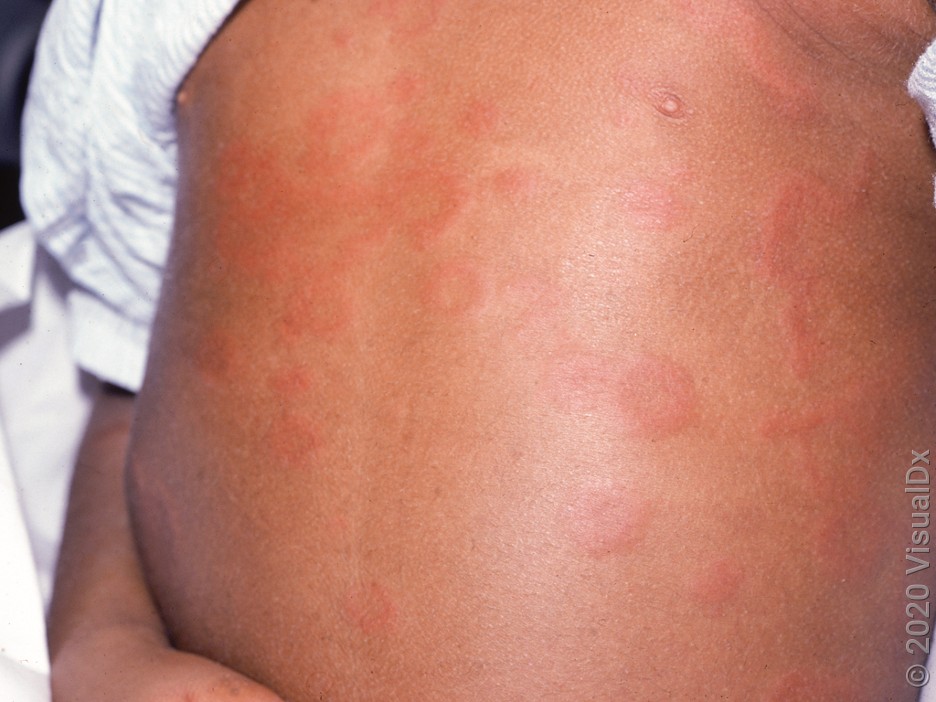
10. Poison oak and poison ivy
“Leaves of three, let it be!” The itchy rash caused by touching or coming into contact with poison oak and poison ivy is very common, especially in the summer months.
The cause of the rash is an allergic reaction to urushiol — an oil in poison oak and poison ivy plants. This oil can stay on objects, like clothes and backpacks, for a long time.
In lighter skin, the rash is usually pink or has red streaks that can have blisters filled with clear fluid. In darker skin tones, the color may be purple or brown beneath the blisters.
It can affect anywhere that’s exposed to the oil — either by direct contact or contact with contaminated items.
People have different reactions to poison ivy and oak. Some don’t get very itchy, while others itch a lot and may even notice some swelling of their skin.
It usually lasts 2 to 3 weeks.
The rash is uncomfortable, but it isn’t contagious. Just be sure to clean anything that may have urushiol oil on it. If you send your child to school with something to relieve the itch, they should be fine.
Mild poison ivy can be treated with OTC hydrocortisone cream, calamine lotion, and cool compresses. A more severe rash may require prescription-strength steroid creams or pills.
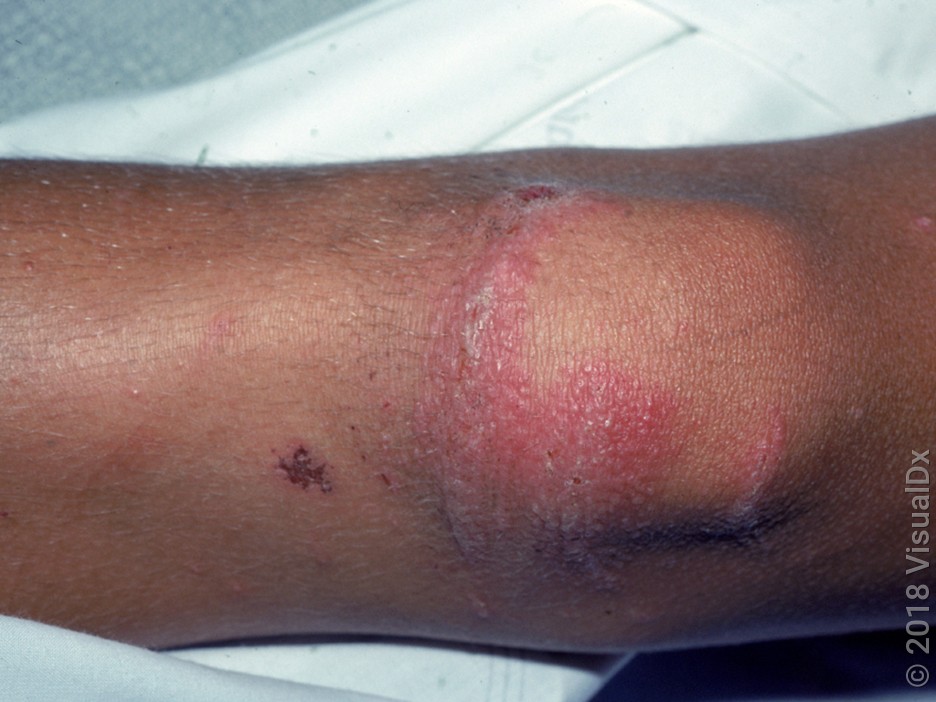
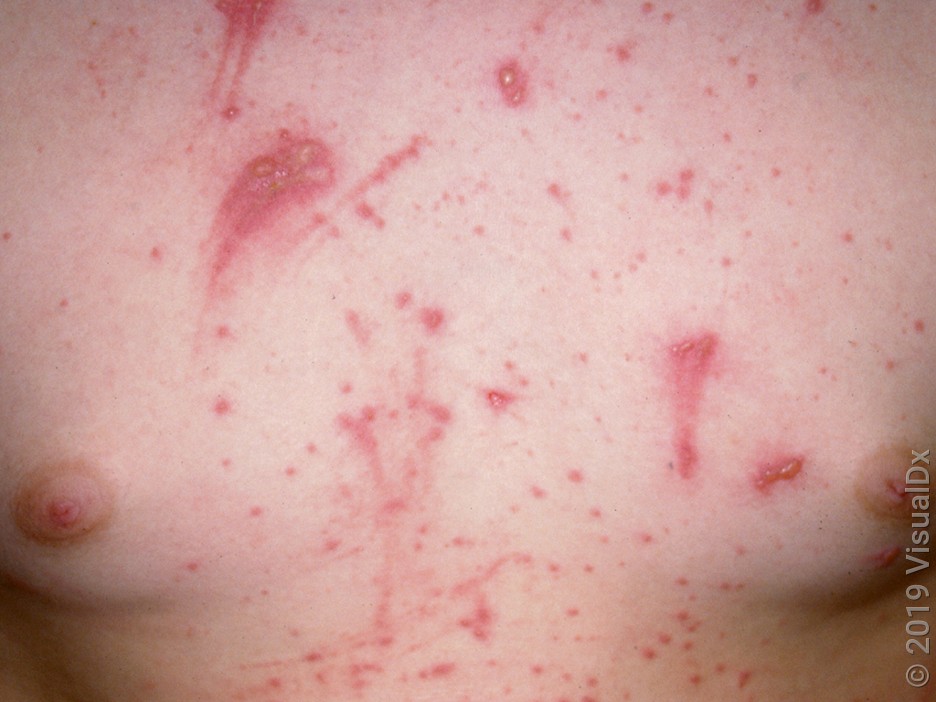
11. Swimmer’s itch
Swimmer’s itch (also called cercarial dermatitis) is an itchy rash that can happen after swimming in freshwater lakes and ponds. It can happen in saltwater, too, but that’s less common. It’s not contagious.
Swimmer’s itch is caused by an allergic reaction to baby parasites (called larvae) released into the water by infected snails. When these larvae come into contact with people, they burrow into the skin and cause an allergic reaction. This isn’t an infection. Larvae can’t live on people, and they die soon after burrowing.
The rash is formed of tiny, red, violet, or skin-colored skin bumps, sometimes filled with clear or white fluid.
The rash can happen on any part of the skin that’s exposed to the water.
The first symptoms are skin itching, burning, or tingling — within minutes of leaving the water. The rash develops within a few hours.
The itchy rash can last up to a week.
Swimmer’s itch is itchy and uncomfortable. It’s not contagious, however, so children can go to school.
Swimmer’s itch eventually fades on its own. Treatment focuses on reducing the itch and making the child more comfortable. Options include OTC remedies like hydrocortisone steroid cream and anti-itch lotions (like calamine), cool compresses, and oatmeal baths.
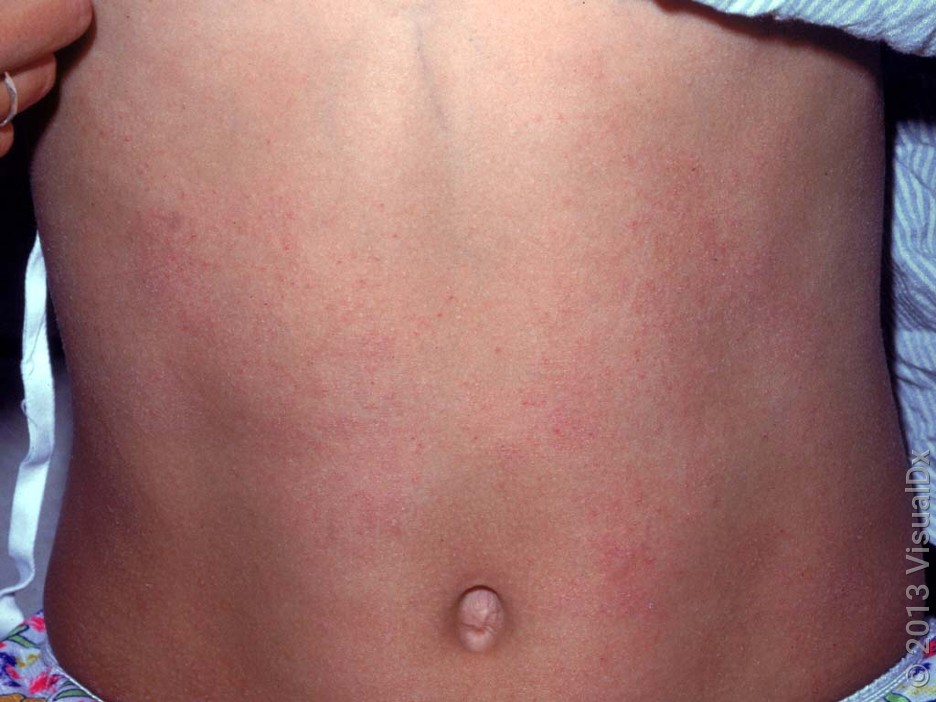
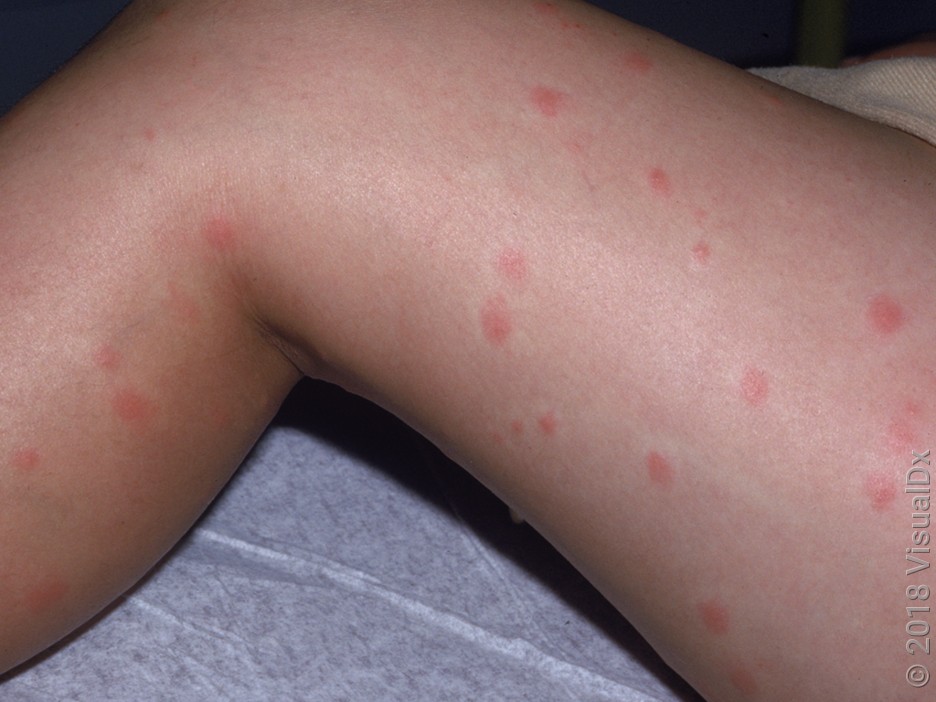
Tips for managing childhood rashes
Thankfully, most childhood rashes will go away on their own. But, here are a few tips for making your child more comfortable:
Use scent-free soaps and lotions. Scented skin products can irritate the skin. Use scent-free soaps like Dove for bathing and avoid bubble baths.
Don’t rub the skin after bathing. Pat the skin dry to avoid aggravating the rash.
Avoid hot water. Higher-temperature water can irritate rashes. Stick to cool baths or use cool compresses to relieve any discomfort.
Try an oatmeal bath. Oatmeal baths can soothe irritated skin. Dermatologists recommend colloidal oatmeal because it reduces inflammation and itch.
Give an antihistamine. If your child’s rash is itchy, give an antihistamine like diphenhydramine (Benadryl) or cetirizine (Zyrtec).
Stay out of the sun. UV radiation from the sun can aggravate a rash. Practice sun safety tips to prevent further irritation.
When a child with a rash needs urgent medical care
There are some signs that a child with a rash needs to be seen urgently by your pediatrician or in the emergency room.
Search and compare options
Signs that your child is unwell
If your child has a rash and is unwell, they need medical attention. Some signs that your child is unwell include:
High temperature
Lack of interest in playing, or they aren’t acting like themselves
Being unusually sleepy
Stiff neck
Sensitivity to light
Confusion
Not eating, drinking, or urinating
Abdominal pain
Nausea, vomiting, or diarrhea
Red, cracked lips
Red eyes
Swollen hands or feet
Difficulty breathing or fast breathing
Difficulty swallowing
Frequently asked questions
When trying to identify your child’s rash, pay attention to its appearance and location, and your child’s other symptoms. This can help you pinpoint a possible cause. But having the rash assessed by a healthcare professional is the best way to identify your child’s rash.
Many other rashes can look like heat rash including bacterial skin infections like folliculitis, acne, and fungal infections like intertrigo. Your child’s healthcare professional can help you figure out if your child has heat rash or another condition.
Yes, stress can sometimes cause rashes. Most stress-associated rashes look like hives. You can treat the hives with cool compresses, antihistamines, and stress management.
The bottom line
There are many causes of rashes in kids. In most cases, rashes resolve on their own with time and aren’t a reason for worry. We can’t always protect our kids from every illness, but we can figure out which ones are worth losing sleep over. If your child is unwell or just not behaving like normal, getting medical advice is always the right thing to do.
Why trust our experts?



Images used with permission from VisualDx (www.visualdx.com).
References
Allergy & Asthma Network. (n.d.). What is chronic urticaria?
Allmon, A., et al. (2015). Common skin rashes in children. American Family Physician.
American Academy of Pediatrics. (2023). Ringworm—Child care and schools.
American Academy of Dermatology Association. (n.d.). Ringworm: Diagnosis and treatment.
American Academy of Dermatology Association. (n.d.). Poison ivy, oak, and sumac: What does the rash look like?
American Academy of Dermatology Association. (2022). Scabies: Diagnosis and treatment.
Centers for Disease Control and Prevention. (2024). About parvovirus B19.
Centers for Disease Control and Prevention. (2024). About swimmer’s itch.
Centers for Disease Control and Prevention. (2024). Ringworm and fungal nail infections basics.
Centers for Disease Control and Prevention. (2024). About scabies.
Centers for Disease Control and Prevention. (2024). HFMD: Causes and how it spreads.
Cerio, R., et al. (2010). Mechanism of action and clinical benefits of colloidal oatmeal for dermatologic practice. Journal of Drugs in Dermatology.
Guerra, A. M., et al. Hand, foot, and mouth disease. StatPearls.
Hartman-Adams, H., et al. (2014). Impetigo: Diagnosis and treatment. American Family Physician.
Ikeda, M. (2024). Fifth disease (parvovirus B19): What parents need to know. American Academy of Pediatrics.
Mullins, T. B., et al. (2023). Roseola infantum. StatPearls.
Nardi, N. M., et al. (2023). Impetigo. StatPearls.
National Health Service. (2023). Angioedema.
National Health Service. (2025). Scabies.
Nemours KidsHealth. (2023). Roseola.
Ngan, V., et al. (2016). Ecthyma. DermNet.
Oakley, A. (2015). Erythema infectiosum. DermNet.
Oakley, A., et al. (2020). Intertrigo. DermNet.
Oakley, A., et al. (2020). Miliaria. DermNet.
Rehmus, W. E. (2023). Folliculitis. Merck Manuals.
World Health Organization. (n.d.). Ultraviolet radiation.





